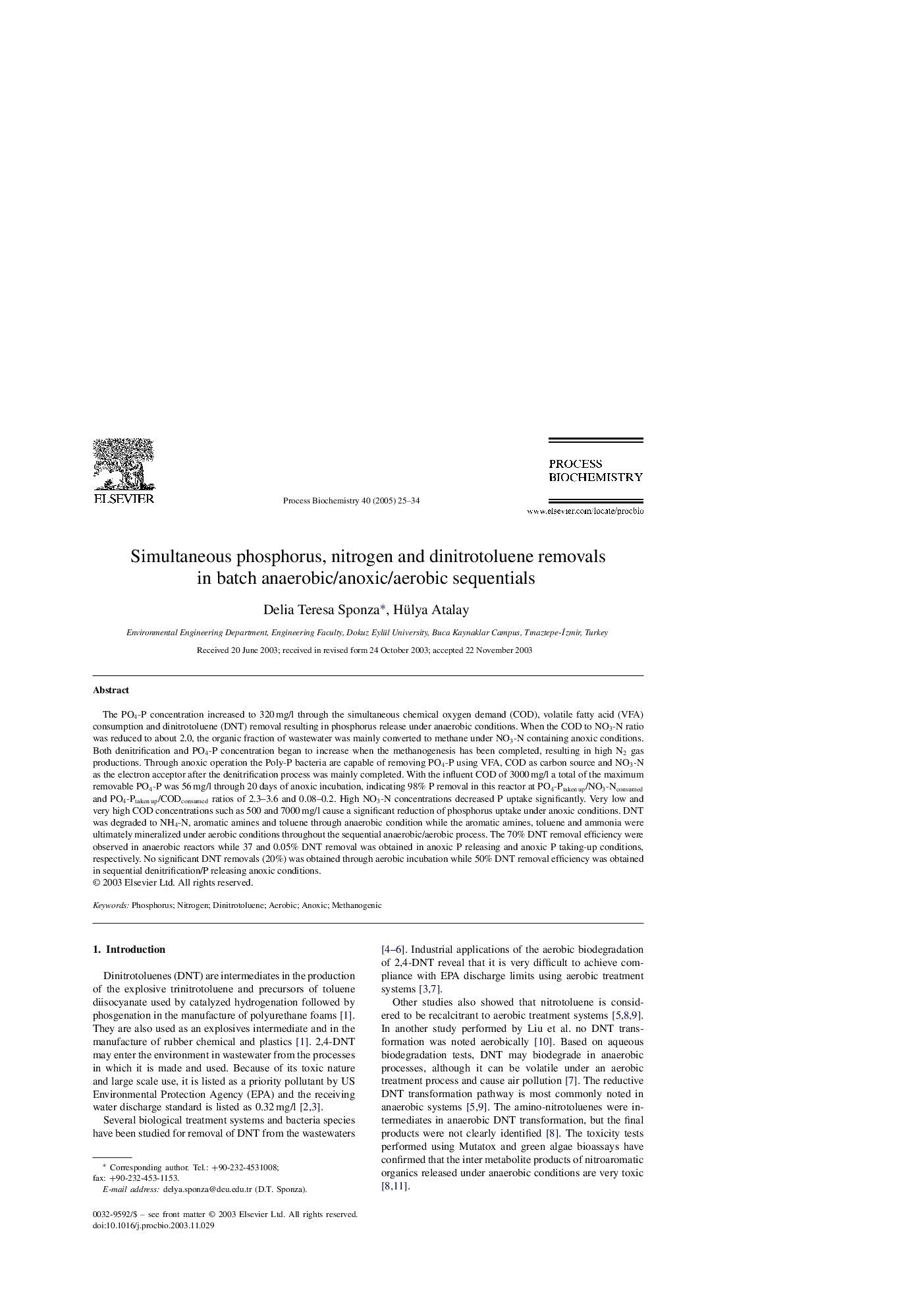| کد مقاله | کد نشریه | سال انتشار | مقاله انگلیسی | نسخه تمام متن |
|---|---|---|---|---|
| 10236154 | 45140 | 2005 | 10 صفحه PDF | دانلود رایگان |
عنوان انگلیسی مقاله ISI
Simultaneous phosphorus, nitrogen and dinitrotoluene removals in batch anaerobic/anoxic/aerobic sequentials
دانلود مقاله + سفارش ترجمه
دانلود مقاله ISI انگلیسی
رایگان برای ایرانیان
کلمات کلیدی
موضوعات مرتبط
مهندسی و علوم پایه
مهندسی شیمی
بیو مهندسی (مهندسی زیستی)
پیش نمایش صفحه اول مقاله

چکیده انگلیسی
The PO4-P concentration increased to 320 mg/l through the simultaneous chemical oxygen demand (COD), volatile fatty acid (VFA) consumption and dinitrotoluene (DNT) removal resulting in phosphorus release under anaerobic conditions. When the COD to NO3-N ratio was reduced to about 2.0, the organic fraction of wastewater was mainly converted to methane under NO3-N containing anoxic conditions. Both denitrification and PO4-P concentration began to increase when the methanogenesis has been completed, resulting in high N2 gas productions. Through anoxic operation the Poly-P bacteria are capable of removing PO4-P using VFA, COD as carbon source and NO3-N as the electron acceptor after the denitrification process was mainly completed. With the influent COD of 3000 mg/l a total of the maximum removable PO4-P was 56 mg/l through 20 days of anoxic incubation, indicating 98% P removal in this reactor at PO4-Ptaken up/NO3-Nconsumed and PO4-Ptaken up/CODconsumed ratios of 2.3-3.6 and 0.08-0.2. High NO3-N concentrations decreased P uptake significantly. Very low and very high COD concentrations such as 500 and 7000 mg/l cause a significant reduction of phosphorus uptake under anoxic conditions. DNT was degraded to NH4-N, aromatic amines and toluene through anaerobic condition while the aromatic amines, toluene and ammonia were ultimately mineralized under aerobic conditions throughout the sequential anaerobic/aerobic process. The 70% DNT removal efficiency were observed in anaerobic reactors while 37 and 0.05% DNT removal was obtained in anoxic P releasing and anoxic P taking-up conditions, respectively. No significant DNT removals (20%) was obtained through aerobic incubation while 50% DNT removal efficiency was obtained in sequential denitrification/P releasing anoxic conditions.
ناشر
Database: Elsevier - ScienceDirect (ساینس دایرکت)
Journal: Process Biochemistry - Volume 40, Issue 1, January 2005, Pages 25-34
Journal: Process Biochemistry - Volume 40, Issue 1, January 2005, Pages 25-34
نویسندگان
Delia Teresa Sponza, Hülya Atalay,